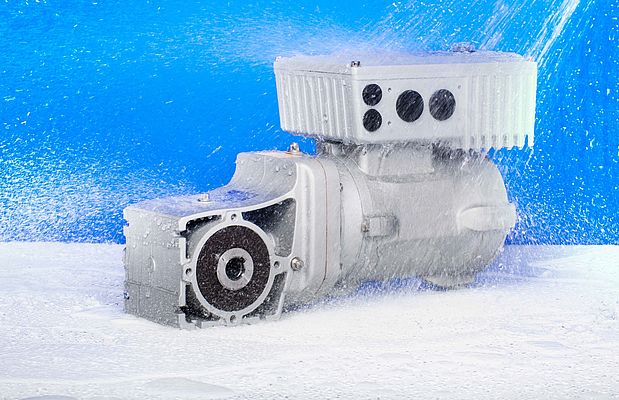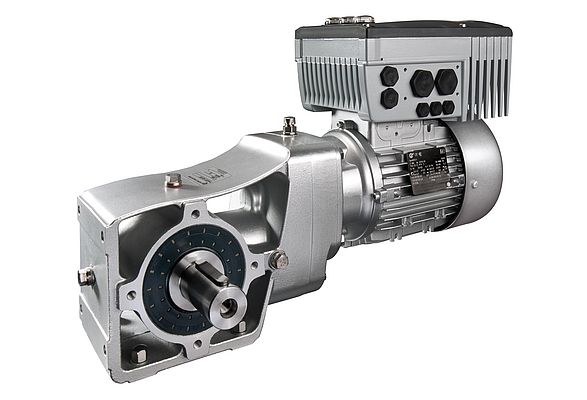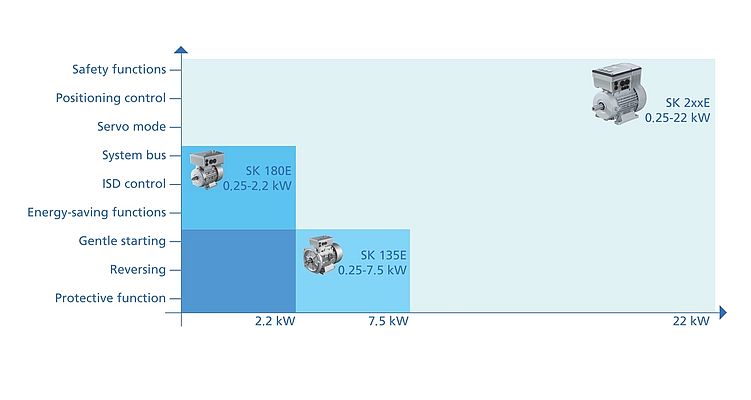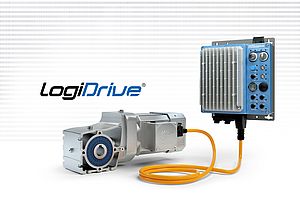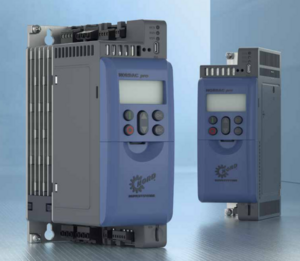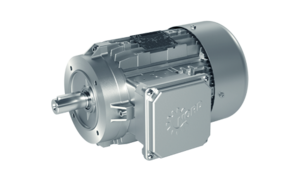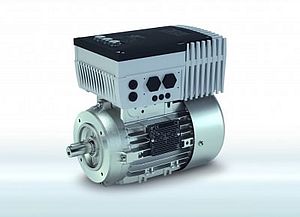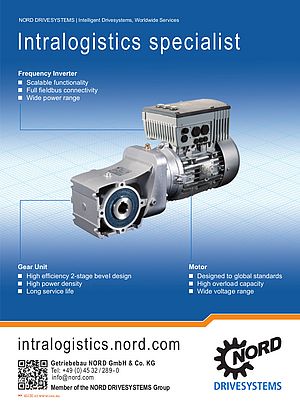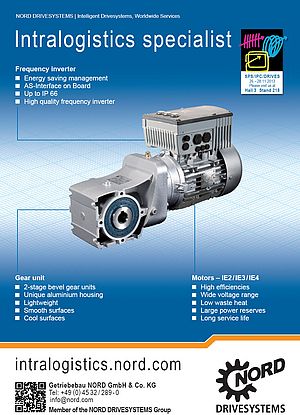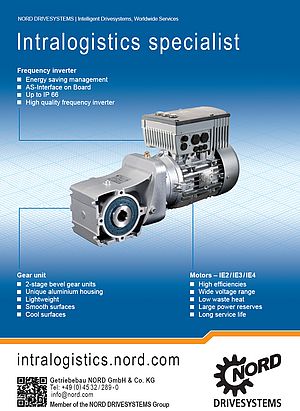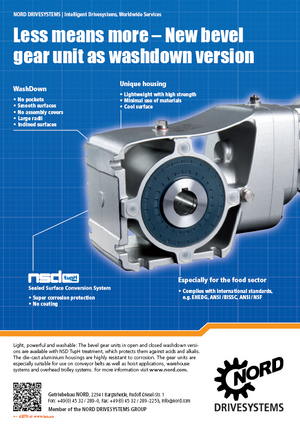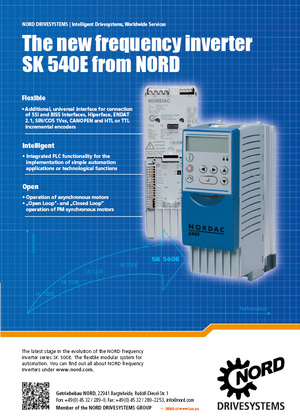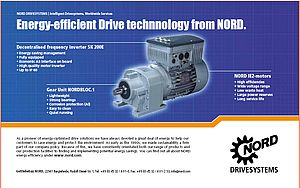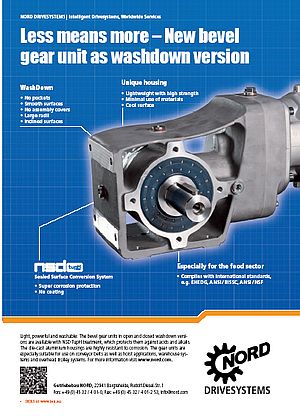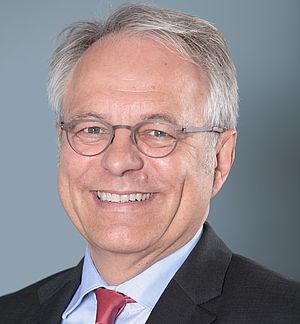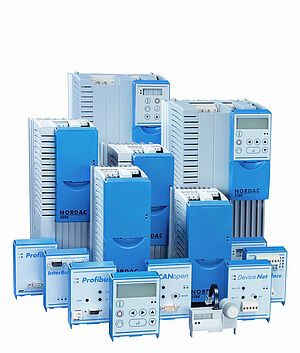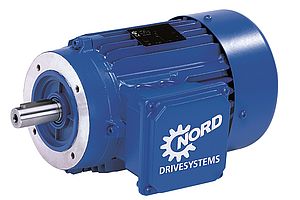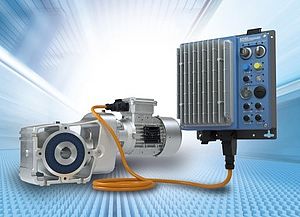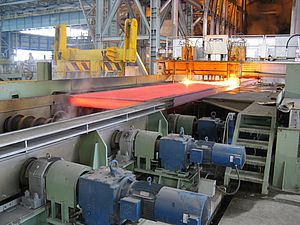IEN: Roughly one month ago, at HANNOVER MESSE, you exhibited drive solutions for conveyor applications. Could you please tell us a bit about these systems?
Niermann: Our exhibition display was a working conveyor and hoist cycle with smooth start/stop operation, synchronized handover of the load, contact-free and gap-free accumulation, and precise positioning. All functions are based on our in-house manufactured integrated mechatronic drive units. Sensor data can be directly communicated to the drives, enabling them to automatically adapt to current demand. The drives' feature range is scaled according to the particular application which enables cost-effective system designs.
IEN: What are the technical features and benefits of these drives?
Niermann: The geared motor units consist of a compact two-stage helical bevel gearbox with a very good weight/performance ratio and an energy-saving motor. These are combined with a decentralized electronics units according to the specific task. The SK 135E electronic starter enables constant speed and reversing operation and is the only motor-integrated starter with soft start functionality. The SK 180E frequency inverter controls the speed of horizontal conveyors and has a uniquely low discharge current below 16 mA. And SK 200E series inverters perform drive tasks in lifting, lowering, and inclined conveyor applications, providing high dynamics even with heavy loads and precise and steady speed control down to zero. They are the only models in their class integrating a position control as well as optional hoist and safety functions up to SIL3. Featuring a brake chopper and a braking resistor, SK 200E drives can also be used for regenerative operation. All of our frequency inverters include an energy saving function that automatically detects partial load and adjusts the energy consumption accordingly. Their overload capacity of 150% for 60 s and 200% for short periods ensures increased reliability and a long service life. Furthermore, our decentralized smart drive program includes an exceptionally large motor performance range: we provide starter units for up to 7.5 kW and inverters up to 22 kW. Customers benefit from cost-effective drive concepts based on standard asynchronous AC induction motors. For instance, our SK 200E drives can provide relative or absolute position control or synchronization.
IEN: Did you showcase additional highlights at the trade fair that you would like to mention?
Niermann: We made it a point to include our cabinet inverter program for motor performances up to 160 kW. Distributed setups are becoming ever more popular for good reason, but we want to stress that centralized installations often remain a valid solution with distinctive advantages and application areas. Trade show visitors in Hanover were especially interested in learning about combined setups where an SK 500E cabinet inverter controls the core application and peripheral functions are controlled by decentralized units such as various SK 200Es. This layout is very user-friendly due to a common operation concept as well as uniform interfaces and parameter configuration for all drive electronics we supply.
Furthermore, we showcased a variable speed drives with an IP66/IP69K rating that withstand regular cleaning with high-pressure steam jets. On a related note, our proprietary nsd tupH treatment was another talking point. You see, we offer the most comprehensive program of aluminum gearboxes and motors worldwide. And by means of nsd tupH surface conversion, we can provide these units with a level of corrosion resistance that rivals stainless steel. As it is no coating, there are no risks of scratches or chipping. Thus users get highly protected drives with a long service life that are very lightweight and ensure much better heat dissipation than steel equivalents.
IEN: Are you satisfied with the overall outcome of the trade show?
Niermann: Very much so. The response from our customers was excellent. We have also established valuable new contacts that will hopefully turn into lasting partnerships.
IEN: In January 2015, the next step of the IEC 60034-30 standard will take effect. What does that mean for machine builders and users?
Niermann: IE3 motors will replace IE2 motors in many applications. Mechanical engineering companies have to prepare. Fortunately, it is not necessary to adapt drives for each national market. We can provide solutions that are globally suitable. We facilitate the switch from IE2 to IE3 by maintaining the same outer dimensions. Only a few performance sizes are a little longer in order to achieve a good thermal profile. Thus, the machine construction does not have to be resized, and a changeover can be easily implemented at any time.
IEN: Which products do you offer to meet this standard?
Niermann: We have been supplying "Premium" motors (the US equivalent of IE3) since 2010 and are therefore well prepared for the European deadline.
IEN: As a kind of over-fulfillment of today's legal requirements, some of your competitors already offer motors in the IE4 efficiency class today. Why don't you pursue the same kind of policy?
Niermann: You are partially right - the IE4 standard is currently only defined in an IEC draft but its efficiency requirements have already been adopted industry-wide. Of course, we have taken that into consideration as well. We offer IE4 motors in the 0.55 to 7.5 kW range, which comprises the chief portion of all industrial drive systems. Our units even have an edge over competing solutions: inverter-controlled, they provide full efficiency over the entire speed range, even under partial load.
IEN: Could you already give us a brief glance on how you will celebrate your 50th company anniversary next year?
Niermann: Currently the preparations are very much in progress. But we do not want to give away anything yet. We will announce each event in time.


